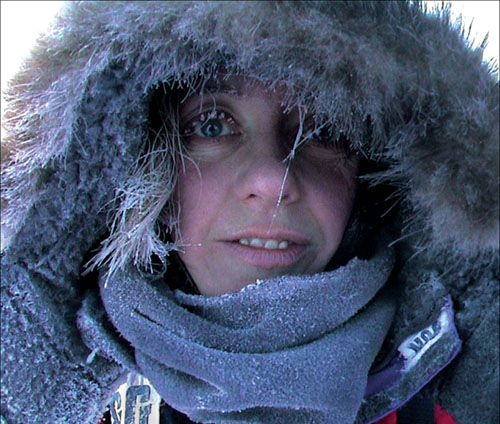
Aventurière • Royaume-Uni
Le rapide retrait de la banquise arctique est une tragédie qui engage la responsabilité de chacun de nous
Ann Daniels est guide polaire. Après la naissance de ses triplés, la jeune Britannique quitte le monde de la banque et s’engage dans des expéditions en Arctique et en Antarctique. En 1997, elle rejoint la première expédition féminine pour rallier le pôle Nord à pied. Trois ans plus tard, elle renouvelle l’exploit en Antarctique. Elle a par deux fois tenté d’atteindre le pôle Nord (2005 et 2009) sans succès à cause de la fonte estivale précoce des glaces.
I first became interested in the polar regions in 1997, 3 years after the birth of my triplets. I saw an advert asking for ‘ordinary’ women for a North Pole expedition. Although I knew nothing of the Arctic, I was chosen to take part in a North Pole relay, where five teams of four women with guides skied to the North Pole. I fell in love with the magnificence of the Arctic. The majestic ice that moved and cracked as we moved among it was like nothing I had experienced. Then, I took part in an all-female expedition to walk from the edge of Antarctica to the South Pole. Although the expeditions were self-gratifying experiences, I began to take an active interest in what was happening to these powerful and fragile ecosystems. In 2002, five years after my first soirée into the Arctic, I put together an expedition to walk from Canada to the North Pole, when we also collected scientific data. It was unbelievable how much thinner the ice had become. In 2002, it had shrunk so much we had to use our sledges as boats and dry suits to swim across open leads. We saw oil and pollution embedded in the huge pressure ridges. I have travelled three other times to the regions around the North Pole, and each year the ice becomes thinner. As a result, the great polar bear is already struggling. Longer ice-free periods during the Arctic summer leave the bears stranded onshore for longer periods, cutting off access to their food supply. During 2005, when I made a solo attempt rom the Russian ice pack, I noticed how much more aggressive polar bears were in their search for food. I had five encounters with bears that left me in no doubt that their plight is real. The polar situation is a tragedy and is a responsibility for us all. In 2009, I took part in a North Pole expedition parting from Alaska to measure the thickness of the North pole ice cap. We were working with scientific partners from around the world to understand the extent of the problem and how long we can expect the icecap to last. Unfortunately we were unable to reach the North Pole due to early summer melt.

